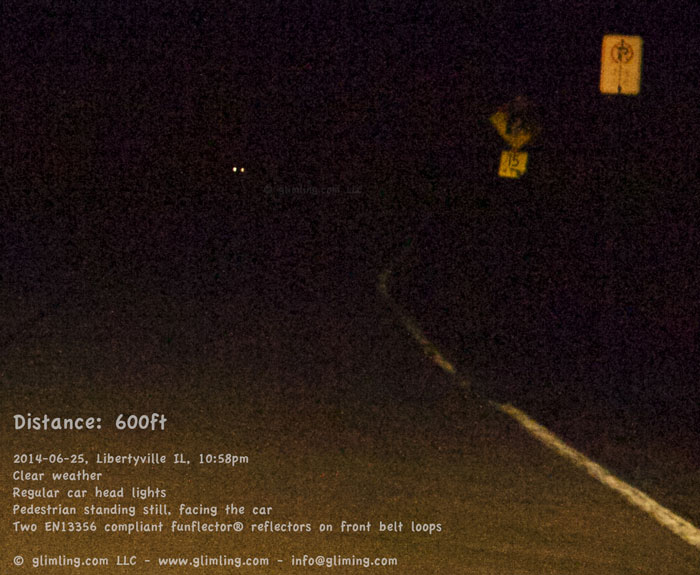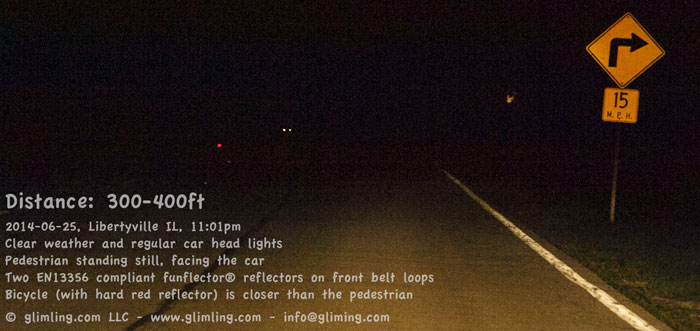Good reflectors should make pedestrians visible from a distance of 125 meters (410 feet), but we wanted to know if we could see our funflector® reflectors from even further away. Would they meet the 500 feet visibility target?
However, first let us be clear about why we care so much about safety reflectors:
- Seventy percent (70%!) of US pedestrian accidents occur when it’s dark.
- Forty (40%) of Swedish pedestrian accidents occur at night. It is estimated that 60% of Swedes wear reflectors regularly.
That is how much of a difference reflectors make!
We found a dark street, straight for over 500 feet and with very little traffic. Here is what we saw of a pedestrian facing us with two reflectors hanging from front belt loops.The first image below was captured at 600 feet. We are very excited and pleased with the result since it is very important for us to provide as much safety as possible for our customers. A note of caution though: reality is rarely staged like this, so please wear at least two reflectors, but place one back and one front – OR- one left and one right. You never know exactly how you will be turned the moment the driver needs to see you! Alternatively, put a slap bracelet around your ankle, the visibility from all directions is pretty good unless you carry bags in your hands that hang low down.

As we were moving closer to the pedestrian a bicycle passed by – without lights! At least it had a rear facing bike reflector under the saddle (the red dot in the pic below).

So, how do you know if a reflector is “good enough” before you buy it (and test it)? We suggest you look for the EN13356 mark, a European standard originating from Scandinavian safety studies, that has become a de facto world standard. Learn about why EN13356 is important in our previous blog post.
Our info graphic below puts pedestrian visibility into the perspective of stopping distance for a car at different speeds. Stopping time includes 1) perception, 2) moving the foot to the break pedal and 3) the actual breaking distance. This is for dry pavement. Of course, when wet, snowy or icy, cars need longer to stop. For nighttime pedestrians without reflectors or lights, the visual expert Marc Green concludes “As a rule of thumb, unalerted drivers will seldom see a pedestrian at distances much greater than 100 feet.”

We know it may be hard to read so below is a larger version.
The funflector team


